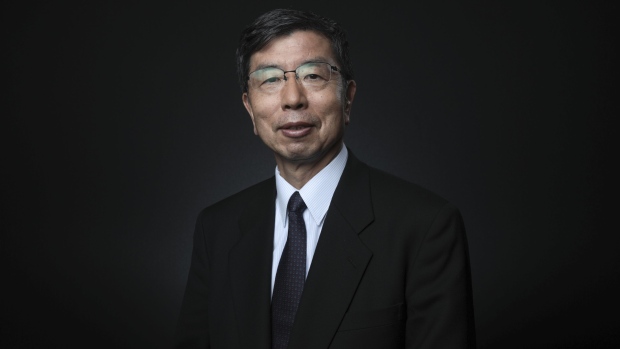Apr 3, 2023
BOJ Should Review Yield Curve Control Under Ueda, Ex-Finance Official Says
, Bloomberg News

(Bloomberg) -- The Bank of Japan should review its yield curve control program under its incoming governor, a former top finance ministry official said ahead of the central bank’s first leadership change in a decade.
The ongoing monetary easing has caused side effects including distortions in the bond market, a drop in the currency and a weakening of fiscal discipline, according to Takehiko Nakao, a former Vice Minister for International Affairs. He stressed the need for the policy tweak while also noting that such a move will also come with risks.
“The yield curve control should be reviewed, even if that results in short-term shocks,” Nakao said in an interview Monday. He didn’t specify the preferred timing or detailed process for the review. “This can’t go on forever.”
Academic Kazuo Ueda will be replacing Haruhiko Kuroda as governor of the BOJ this weekend, and faces the thorny problem of what to do with a complicated policy framework that has resulted in the buying of assets larger than the size of Japan’s economy. Nakao’s calls for a policy adjustment add to a majority of economists expecting change from the BOJ by June, according to a survey conducted around a month ago.
Nakao, who now chairs Mizuho Research & Technologies, suggested multiple uncertainties exist for incoming governor Ueda. One of them is a series of recent banking crises that have heightened financial insecurity worldwide.
“Now the BOJ needs to take into account the stability of the financial sector, as well as monetary policy in the US and Europe, when it reconsiders its own policy,” Nakao said.
Still, the former senior MOF official said it’s unlikely that Japanese financial institutions will find themselves in the same situation as Credit Suisse Group AG, due to the more limited number of Japanese banks, strict supervision practices and banks’ relatively conservative business models.
Nakao also suggested Japan’s recent price developments are another factor that could complicate Ueda’s monetary policy steering.
It’s unclear whether tightening is necessary to counter inflation, or if inflationary pressures aren’t as strong as they appear, Nakao said. He said that Japan’s current price gains are driven by higher import costs and not by wage hikes, echoing the central bank’s latest view.
Nakao also criticized the expanding expectations for monetary policy, which is now viewed as a solution to a wide range of problems from growth, prices to climate change.
Monetary policy has been seen as “a cure-all,” said Nakao. “That thinking’s created all sorts of problems.”
--With assistance from Toru Fujioka.
©2023 Bloomberg L.P.





